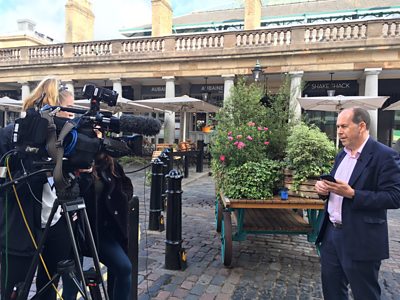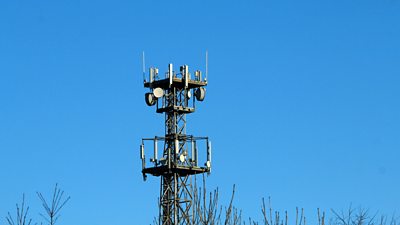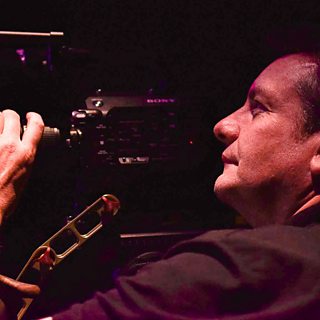You cannot have failed to hear about the latest generation of mobile technologies labelled 5G. It has the potential to have a significant impact on all areas of our lives with promises of high-speed, high quality, always-on connectivity.

As with all technologies there is room for improvement. These units require multiple connections which in turn require numerous sim cards and of course if you are outside the coverage area of one provider you need sim cards for an alternative network. They also use proprietary technologies which rely on you having a receiver that is from the same manufacturer as the transmitter. Another issue is that they heavily compress video which can cause issues in onward production and distribution chains and while these technologies can provide a single video link there is a demand for a technology that could allow several cameras to be connected and timed together to reduce the amount of effort required on location to set up a multi camera outside broadcast (OB).
There is also no differentiation between the networks that these devices connect to and public networks, so at large events the connections become unreliable as they fight for connectivity with large crowds or other users such as the emergency services.
We also have to be mindful that as mobile technologies develop and increasingly dominate how we work they need radio spectrum. We have already seen the to make way for new services. In production we use dedicated radio spectrum not only for contribution but also for radio cameras, radio microphones, in-ear monitoring, talkback and reverse video feeds. If 5G becomes the dominant radio technology, then we need to think about its suitability to replace existing systems.
There is significant interest in how to deploy a technology that could improve how we may make content, not only from inside the ΒιΆΉΤΌΕΔ but from a wide range of and other broadcasters. It is therefore important for us to understand and, where possible, seek to influence its capabilities and when it can be practically deployed at scale.

Co-ordinated Input
In May 2018, a group of EBU Members, partners, suppliers and other interested parties got together to form a working group on . At the same time launched a study as to the requirements of Audio and Video Production alongside several other studies into other industry use cases. The aim is to identify how 5G may be updated in future releases to best meet the requirements of content producers. The 5GCP group is the main contributor to this study coordinating input from across the industry.
The mobile communications world is a rapidly changing one which can be described as more evolutionary than revolutionary. It is likely that solutions will appear to replace current cellular bonding technologies deployed on 3G and 4G networks even if we did nothing. Helping the mobile telecoms industry understand what we do and how we do it means showing that production of a broadcast is far more than a βone-way video callβ.
As the broadcast industry adopts more IP-based workflows, connectivity that meets our requirements becomes increasingly vital. It is therefore very important that we work with the telecommunications companies to ensure that our requirements are understood and implemented in a manner that supports production workflows.
Pairing the potential of the technology with the threat of spectrum currently in use by broadcasters and production teams being eaten up by future radio system deployments has formed the backbone of the project. We have worked to identify how UHD content may be carried at the highest quality, on the very demanding latency requirements of audio workflows and even how the technology may be deployed to cover events over a wide geographical area, such as a cycle race or marathon.
This part of our work will ensure that the future standards will have an ability to support our needs but we also need to explore what else 5G has to offer.
One key component of the 5G technology stack is . This enables a dedicated part of the network to be made available for a dedicated set of users, a bit like a private wi-fi network it means we can have a known and controllable environment to improve reliability of connections.
Other technologies such as may allow for processing of signals closer to the point of acquisition and therefore enable remote production workflows to become more streamlined.
We also want to take advantage of 5G to extend our studio networks. ΒιΆΉΤΌΕΔ R&D has been instrumental in defining how broadcast centres can be built on IP based technologies. If we can extend out beyond the boundaries of our managed networks and connect devices using the same transport and control protocols, there could be much more flexibility in thesystems and open standards that we use. This could mean that we would be able to receive signals from any device connected to the network and not require dedicated hardware and workflows for multiple different types of connections.
This does not mean that we will be reliant on existing mobile network operators. 5G is also designed to run on non-public networks so in the same way that a private wired or wireless network can be deployed currently. We hope to have the ability to set up networks as appropriate, this may be with existing providers, new companies with different business models or self-deployed on dedicated spectrum.
In the future we hope that 5G will provide us with the reliability, flexibility and mobility required by production and help reduce costs associated with dedicated hardware for production use.
- -
- ΒιΆΉΤΌΕΔ R&D - All of our articles on 4G and 5G including:
- ΒιΆΉΤΌΕΔ R&D - Broadcasting Over 5G - Delivering Live Radio to Orkney
- ΒιΆΉΤΌΕΔ R&D - 4G & 5G Broadcast
- ΒιΆΉΤΌΕΔ News - 5G: Launch of UK's Next Generation Mobile Network
- ΒιΆΉΤΌΕΔ R&D - TV Over Mobile Networks - ΒιΆΉΤΌΕΔ R&D at the 3GPP
- ΒιΆΉΤΌΕΔ R&D - 5G-Xcast
- ΒιΆΉΤΌΕΔ R&D - 5G Trials - Streaming AR and VR Experiences on Mobile
- ΒιΆΉΤΌΕΔ R&D - 5G Smart Tourism Trial at the Roman Baths
- ΒιΆΉΤΌΕΔ R&D - New Content Experiences over 5G Fixed Wireless Access
- ΒιΆΉΤΌΕΔ R&D - New Audience Experiences for Mobile Devices
- ΒιΆΉΤΌΕΔ R&D - Building our own 5G Broadcast Modem
- ΒιΆΉΤΌΕΔ R&D - Broadcast Wi-Fi
